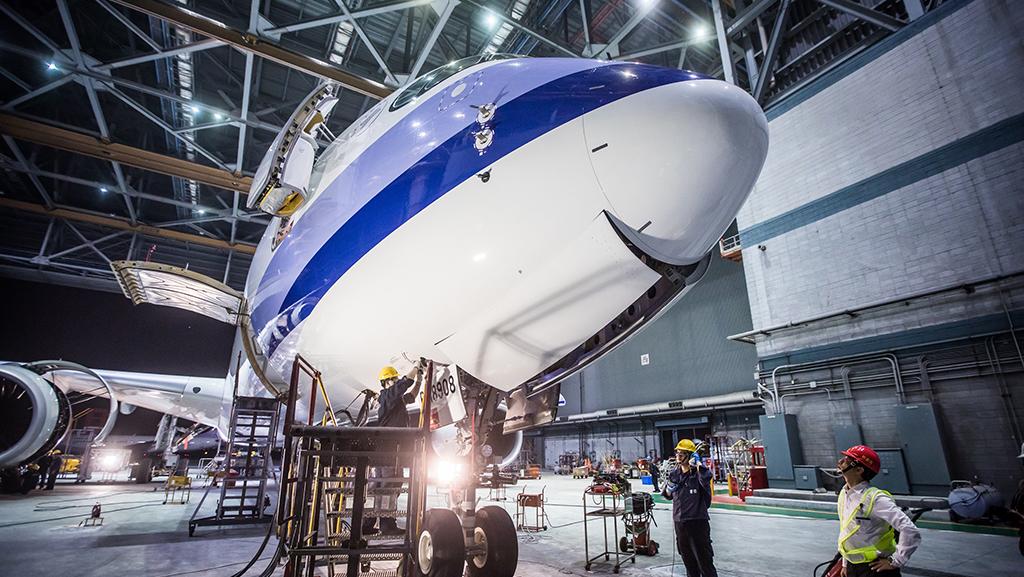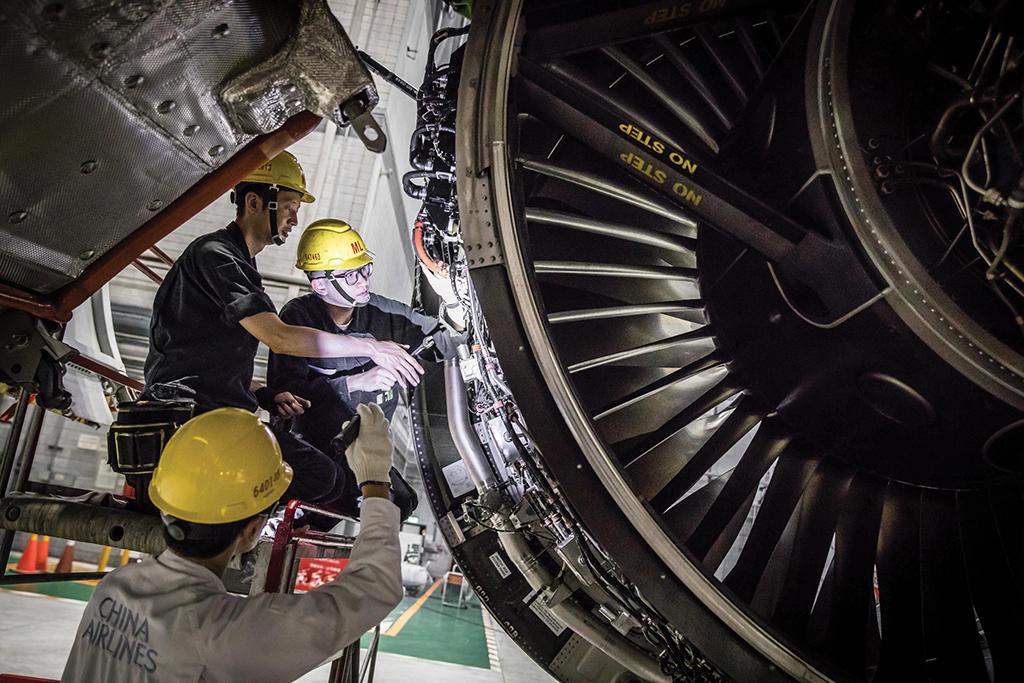
Eight months into the outbreak of the COVID-19 pandemic, Taiwan continues to be the only country that has the virus under control and has not seen a second-wave outbreak. However, the wings of its flag carrier China Airlines (CAL) remain clipped, and its 2,500-strong Engineering and Maintenance Organization (EMO) is not taking any risks that might hinder its ability to provide MRO capabilities for the airline.
Paul Shiao, CAL’s assistant vice president for the maintenance division prior to the pandemic, says the EMO’s plans to renovate its facilities, including the hangar offices and material storage building, have been put on hold. It also planned to implement innovative projects such as ground support equipment management systems, an aircraft exterior inspection system and a “smart” workshop, all of which have been paused due to the pandemic.
He says the group is tackling a “cost-down scheme” in five areas, consisting of contract reviews, streamlining maintenance schedules, adjusting maintenance capacity, reviewing time and material management, and managing equipment and material by setting up project plans and savings targets. The results are reviewed on a monthly basis.
The EMO has implemented physical-distancing measures such as working in separate buildings, a “masks-on” policy and recording body temperature twice daily. To prevent a long line in the canteen, the company caters lunch boxes, and each table can only accommodate one person. Shop floors, stores and elevators are marked with distance markers to enforce physical distancing between employees.

To prevent cross-infection, the workforce is separated into two teams, and each works every other day and on different aircraft, meaning there is no chance that two teams will meet each other at the same time and space.
“To further reduce the possibility of cross-infection in between, we require each party to implement disinfection measures every day at the public area, office area and especially the changing area. We didn’t see our productivity going down,” Shiao says.
Aircraft Preparedness
Aviation Week Fleet Data Services estimates CAL now has around 20 aircraft parked or on reserve, mostly the Boeing 737 series. The airline set up a designated team to manage and optimize the demand for aircraft parking based on the trend of flight cancellations, aircraft maintenance requirements and relevant regulations. The airline used 30-day active storage guidelines derived from the manufacturers’ aircraft maintenance manuals and engineering orders to keep the aircraft in a high state of readiness.
In the event of an impending typhoon, the EMO will participate in an “anti--typhoon committee meeting” held at the CAL control center to decide which aircraft will be tied down at Taipei Tao-yuan Airport and which will be flown elsewhere to avoid the strong winds.
“To protect aircraft from a typhoon, we are not only tying down the aircraft at the airport, but we also are assigning an engineer to stay in each aircraft cockpit while the typhoon arrives to pressurize flight control surfaces to keep it steady on the ground,” Shiao adds.
Air cargo continues to be a lifeline for CAL’s revenue and has contributed NT$41 billion ($1.4 billion) to the carrier’s coffers. Until the arrival of the new Boeing 777F due this year, the freighter fleet is still anchored by 17 Boeing 747-400Fs, all of which are 13-20 years old. Shiao says manufacturers are committing fewer resources to enhance the 747-400F’s reliability, as the type is gradually being phased out.
“However, due to CAL EMO’s long experience on the type, our 747F’s reliability has been kept satisfactory by adding more maintenance tasks and shortening the intervals of the mandatory work. In addition, a special task force has been formed to closely monitor the key components of our freighters for smooth operation,” he says.
Spares have taken a longer time to arrive during the pandemic, especially larger parts that have longer lead times due to high demand for cargo space, with the average lead time approximately two weeks longer than before. Shiao stresses that the airline does not cannibalize parts.
The task force’s sole purpose is to maximize the freighter dispatch rate, focusing on maintenance defects tracking and corrective measures to make sure the freighters are always dispatched on time.
The EMO also carried out cabin modifications on Boeing 737-800 and 777-300ER and Airbus A350-900 models based on Taiwan Civil Aeronautics Administration and manufacturer’s guidelines, enabling the aircraft to conduct mixed passenger-cargo flights to supplement the carrier’s revenue.
While domestic flights continue, most of these are operated by the group’s Mandarin Airlines, which flies the ATR 72 and Embraer 190, hence there is no transfer of engineers and technicians due to the different type ratings.
The Road Ahead
Shiao has identified two fronts the EMO will focus on as it adjusts its strategies for the future. In the area of human resources, the organization is planning to fine-tune employee roles to better cope with future demand, and it has been conducting both on-the-job and recurrent training over the last few months.
It is also adjusting its maintenance capabilities to meet the airline’s needs while the 30-day active storage plan continues. To do that, it readies spares and reviews individual technicians’ qualifications to prepare for future lease returns. CAL currently has 10 A330-300s, six 777-300ERs and 15 737-800s on lease.
The lease returns of the 737-800 are also in line with the introduction of the Airbus A321neo, with 11 under a memorandum of agreement with Airbus and another 14 placed on lease. Shiao says CAL is now preparing maintenance capabilities for the A321neo as well as the 777F to guarantee a smooth entry into service.

